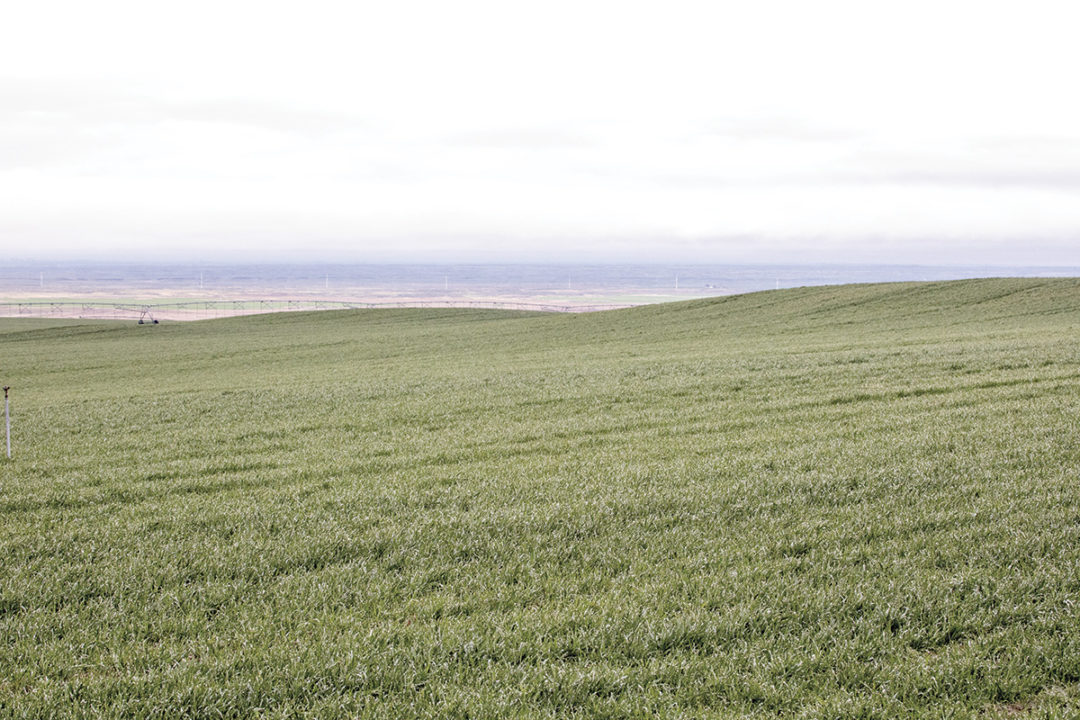
Staff photo.
Spring is (finally) afoot … and so are cereal pathogens
Although a winter of heavy snowfall in southeast Idaho has been a boon to dwindling reservoirs and groundwater storage, it may bring with it some challenges for cereal farmers in that region. In the higher-elevation areas north of Idaho Falls, conditions were still cold and wet into mid-April … and counting.
“There are places that have had over 150 days of snow cover,” says Dr. Juliet Marshall, plant pathologist at the University of Idaho – Idaho Falls Research and Extension Center. Such a long stretch first depletes a winter annual’s overall health by preventing photosynthesis, causing the plant to burn through its carbohydrate reserves. Secondly, such a winter creates prime conditions for two cereal pathogens: snow mold and dwarf bunt.
Snow mold
Snow mold thrives at temperatures just above freezing, as may be found at the soil surface under snow. Snow cover also protects the mold from sunlight and promotes damp conditions, perfectly suited to snow mold’s needs.
In an infected field, snow mold depletes the plants’ carbohydrate stores. At best, an infestation will set the crop back; at worst, it may cause death. Many producers plant resistant varieties in areas prone to snow mold. “But with five months of snow cover, they’re probably not going to survive,” says Marshall.
Between the snow mold and winter kill (which may result from flooding, freezing or frozen ponding), she expects that many producers will have to replant some acres. Unfortunately, as cold and wet conditions continue, replanting will present its own issues. Seedling rot in cold, wet soil is a primary concern.
And that’s after things dry out enough to get equipment into the fields – which hasn’t happened yet. “We are very late planting spring grain here,” says Marshall. A compressed growing season reduces yield potential. If, like last year, conditions suddenly turn hot and dry, heat stress may exacerbate the decreased yield and contribute shrunken kernels and increased protein to harvest woes.
Another consideration, even after replanting, is that after fields thaw, snow mold will produce microsclerotia (the fungal equivalent of seeds). “This increases the inoculation potential for next year,” says Marshall.
Dwarf bunt
Although replanting is a bleak prospect, a healthy-looking crop after the snow melts might disguise a more insidious pathogen – dwarf bunt. “It thrives under the exact same conditions, but it doesn’t look like the plant is affected right away,” says Marshall. Although significantly shorter than unaffected plants, infected cereals will otherwise grow normally until maturation. At this point, a bunt ball full of dark spores will form in place of a normal seed head.
Producers who live in areas where dwarf bunt is a known problem tend to use resistant varieties or specific seed treatments. “Resistant varieties are best, but there are not many varieties available,” Marshall says. Dwarf bunt resistance is not a common breeding program focus because it is typically seen in a limited area and only causes major problems in extreme years like this one.
Late-spring planting
With the spring crop (hopefully) going in soon, Marshall advises producers to consider the conditions. “If they haven’t already bought seed, early maturing varieties might be helpful,” she says. Increased seeding rates can help offset potential losses from seedling rot and rodent activity – yet another pest problem potentially exacerbated by the heavy snow year.
“Hard wheat might be better than soft if it does what it did last year,” Marshall adds. But that, of course, is a different question, to be answered as the season unfolds in the months ahead.
